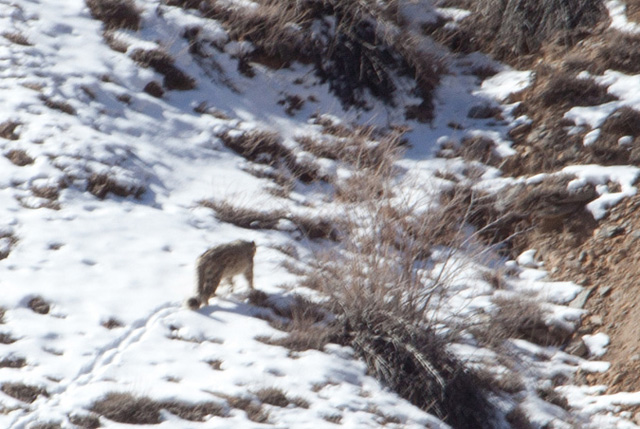Introduction
Be ready to be blown away by this grand tour and come back with images like you have never taken before!
Darter Photography Tours is excited to take you to the land of the high passes this summer. Be ready to be awed as you wander in the mountains photographing stark yet beautiful landscapes of Ladakh. Travel with photography experts and capture the beauty of super-blue lakes, see the views from the highest motorable road in the world, watch wildlife that can be seen nowhere else in the country and witness rituals of a culture that has kept its traditions alive for almost a millennium. This Mountains and Monasteries Tour is specially designed to maximize photography opportunities and capture the deeper essence of Ladakh.
We are coming up with this second edition of our tour of Ladakh this year, as the first scheduled in the first half of July is completely booked.
Dates
Also visit the facebook page of Darter Photography Tours to stay updated on our tours and workshops.
Is this tour for you?
This tour is intended for serious as well as amateur photography enthusiasts with an interest to visit and photograph the beauty of Ladakh. Travel enthusiasts who are not photographers but keen to experience the multiple facets of Ladakh can also benefit from the tour.
Tour highlights
- Visit to sights specifically chosen keeping photography opportunities in mind
- Expert help and advice with photographing culture and landscapes of Ladakh
- Constant interaction and assistance on field by photography experts having considerable experience travelling in Ladakh
- Insights to nuances of travel and outdoor photography during the tour
- An opportunity to attend a monastic festival and photograph monks performing masked dances
- Image reviews by photography experts at the end of day, every day
The itinerary
Also see the detailed itinerary and images at the bottom of this page.
Participants can chose to join the tour in Manali or directly arrive at Leh. If you arrive directly at Leh, your tour begins from the morning of Day 03.
- Day 01 22-July Manali to Keylong
- Day 02 23-July Keylong to Leh
Those arriving directly at Leh will join the tour from Day 03 below.
- Day 03 24-July Rest day in Leh for acclimatization, with a visit to Shanti Stupa in the evening.
- Day 04 25-July Leh to Pangong Lake. Visit Thiksey Monastery on the way. Stay on the banks of Pangong Lake.
- Day 05 26-July Pangong to Leh with a visit to Shey Palace on the way. Stay at Leh.
- Day 06 27-July Leh to Tso Moriri. Stay on the banks of Tso Moriri
- Day 07 28-July Drive from Tso Moriri to Leh, via Tsokar. Stay at Leh.
- Day 08 29-July Day visit from Leh to Phyang Monastery for Phyang Monastery Festival
- Day 09 30-July Day visit to Khardung-La from Leh
- Day 10 31-July Depart from Leh
Tour Cost
• Rs.30,500/- per person if you join to tour at Leh on Day 03 (July 24th)
• Rs.36,500/- per person if you join the tour at Manali on Day 01 (July 22nd)
The cost includes
– Accommodation on twin sharing basis
– Transportation on all days of the tour
– Breakfast and two meals at the hotel or on the way on all days
– Inner line permits and all entry fees
– Expert photography advice and assistance, image reviews and critiques on all days
The cost does not include
– Travel to Manali for those joining the tour on Day 01
– Travel to Leh for those joining the tour directly at Leh on Day 03
– Return travel from Leh
– Additional snacks or beverages ordered
– Anything else that is not part of the includes list above
Please note that the itinerary is subject to favourable weather and road conditions. In case of bad weather and inaccessibility to a destination, we will do our best to make alternate plans. The cost of the tour or any part of it will not be refunded in the event of unfavourable conditions anytime during the tour days.
Accompanying Photography Experts: Shreeram MV
Shreeram is a professional wildlife photographer and a passionate naturalist. His images are widely acclaimed have found place in glossy desktop calendars and publications. His passion for travel has taken him to many places across India – from rainforests to the high-altitude deserts to grasslands to coasts – and create beautiful photographs. He comes with vast expertise in wildlife photography, having photographed hundreds of species of birds and mammals from places as far as mountains of Ladakh to seashores of South India. His keen eye for landscapes and culture helps you enjoy and photograph the different facets of Ladakh. See some of his works at http://www.visualquotient.net
Book this tour
Contact us to book the tour. Like all our tours, Mountains and Monasteries tour of Ladakh will have a limited number of participants. We recommend booking early, which also helps you get cheaper flight tickets.
email: register@darter.in
Ph: 9880006460 (Arun) / 97400 83260 (Shreeram)
Detailed itinerary
Day 01. Manali to Keylong.
The exciting journey begins today as we leave really early in the morning from Manali. We climb up steadily through the green vistas of Pir Panjal Ranges towards Rohtang Pass, the first high pass along the way. Rohtang is as far as the tourist crowd to Manali go, to play in one of the most easily accessible large expanse of snow. Rohtang Pass is a wide ridge that divides two completely different worlds. The mass of tourists, the traffic and all the commotion dies down and makes way to silence on the other side of the valley. Verdant landscapes of Beas Valley make way to a stark beauty that has no parallels to scenery witnessed so far. It is here that we begin to see first glimpses of barren landscape that Ladakh is, though Ladakh itself is still far away.
We descend the valley and drive parallel to Chandra River for a some time, unfailingly gawking at the sharp and high mountain peaks on the other side of the valley, occasionally seeing waterfalls tumbling down from the slopes.
We reach Keylong late afternoon, where we will be staying tonight. The deep valley of Bhaga River and the remnant greenery of Lahaul Valley provides some great photography opportunities before we rest for the day.
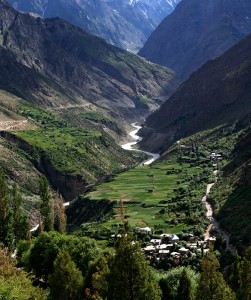
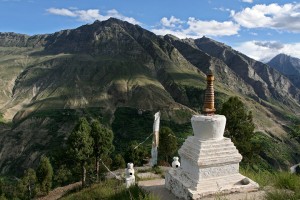
Day 02. Keyong to Leh.
The remotest and stark landscapes of Manali-Leh highway will keep your camera busy today. You won’t have enough of these landscapes and you will never be tired of clicking through the day. Keep all your memory cards outside with you – you will realize soon that dozens of gigabytes consumed will still leave you hungry for more. We pass through several high passes, with one of them more than 18,000 feet high. These dizzying landscapes are as dramatic as they can get anywhere in the country. Today we will pass through a stretch of more than two hundred kilometers of road where you see no permanent habitation. Not to worry, you will still see some summer settlements built for quenching the thirst and hunger of travellers making this long journey. We arrive at Indus Valley in the evening and get the first glimpses of Ladakhi habitation. When we reach Leh in the evening and checkin at the hotel, you will surely feel having gone through an out-of-the-world experience.
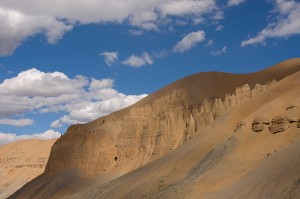
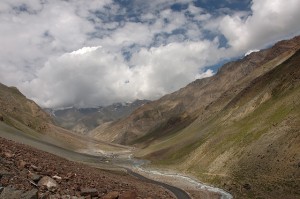
Day 03. Rest Day at Leh. Visit Shanti Stupa in the evening.
Those joining the tour at Leh will arrive in the morning after a flight over snowy mountains. Don’t forget to arrive early in Delhi Airport and demand for a window seat at the check-in counter. You will regret it if you don’t do so. Not everyday does one get to see 15,000 feet high mountain peaks from a height miles above them. We recommend taking the first flight available in the morning and take the right-side window to see first rays of sun kissing the snow peaks.
For those coming by the road, this is the day to rest after the excitement of Manali-Leh highway.
We will take the day easy and allow the body to acclimatize to Leh’s altitude of 11,500 feet. We will spend most of the day in the hotel, letting the body adjust to rarefied air and high altitude. We will drive to Shanti Stupa in the mountains above Leh in the evening to witness the sunset and see the last rays of sun go over Leh Town and on the distant mountains of Zanskar Ranges.
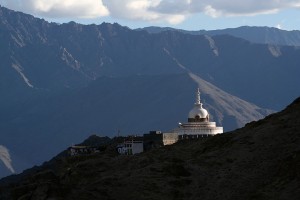
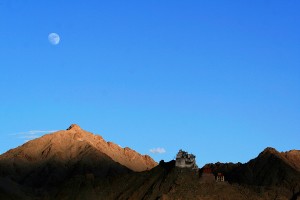
Day 04. Pangong Lake. Visit Thiksey Monastery on the way.
Another day of driving through high passes, but in a landscape that keeps changing by the hour. After driving upstream Indus River for an hour, we will leave the Indus Valley and head towards the high-altitude plateau of changthang region. On our way is formidable Changa La. We get across the pass with our jeeps wading through many icy and clear streams. As we climb up, it is another opportunity to see and photograph a different view of Zanskar Ranges. Soon after we cross Chang La, you will be surprised to see a lot of green grass, unlike the stark slopes we have just left behind. You might see cute and cuddly-looking marmots playing in the slopes. They are timid and some of them may even come and stand next to you expectantly. We recommend not to feed them, but photograph them instead.
Sometime after we cross Chang La, we will see a small but beautiful lake with clear blue waters. We will then follow the stream running off the lake and descend to reach the village of Thangse. Further ahead, we will drive through a narrow valley carpeted with rich green grass and a stream flowing by. Lookout for colorful flowers along the stream bed. But this is not all; the first view of deep-blue waters of Pangong Lake will force you to halt there and gawk at its beauty forever. We will be staying next to the lake today, watching the sun go down the mountains across the lake.
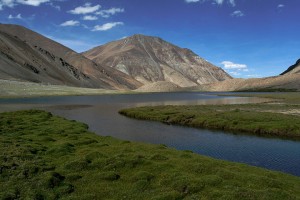
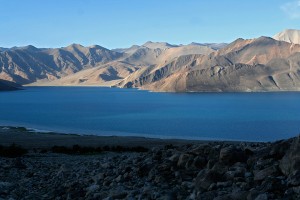
Earlier in the morning soon after we leave Leh, we would have stopped for sometime at Thiksey Monastery, perhaps the most beautiful and among the larger monasteries in Ladakh. The monastery is a haphazardly spread group of buildings on a crag and its structure is sometimes compared to giant Potala Palace in Lhasa. We will see and capture the beautiful array of small stupas outside the monastery, visit the room hosting two-storey Maitreya Buddha statue and try to decipher some colourful paintings in the monastery’s prayer hall.
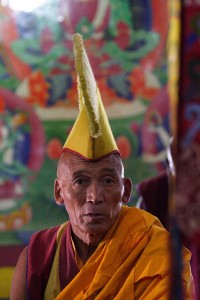
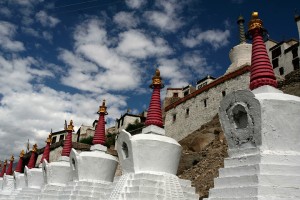
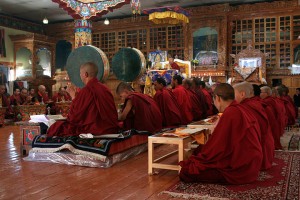
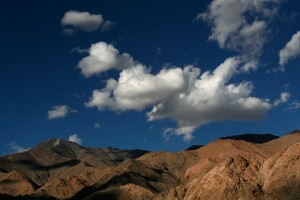
Day 05. Drive to Leh. Visit Shey Palace on the way
After spending some time on the bank of the lake in the morning hours, we will make a slow and easy drive back to Leh, stopping on the way to see ancient Shey Palace. You will again find some time to rest and wander around in Leh today evening.
Day 06. Leh to Tso Moriri Lake.
If Pangong is the largest lake in Ladakh spreading over a lenght of more than a hundred kilometers across two countries, Tso Moriri is perhaps the most beautiful. The brackish water lake trapped amidst the mountains in all directions is flanked by a large grassland that adds to the beauty of the deep blue lake. The snow-capped mountains rising steeply from the edge of the lake on the other side add to the drama of the landscape. Wildlife enthusiasts will also see a lot of birds at the lake. Lookout for black headed gulls, great crested grebes and bar headed geese.
Korzok Village on the bank of Tso Moriri still feels remote and charming, thanks to its distance from the highways in Ladakh and also from Leh town. A stroll in the village and a short climb of the hills behind gives you excellent panorama of Tso Moriri Lake.
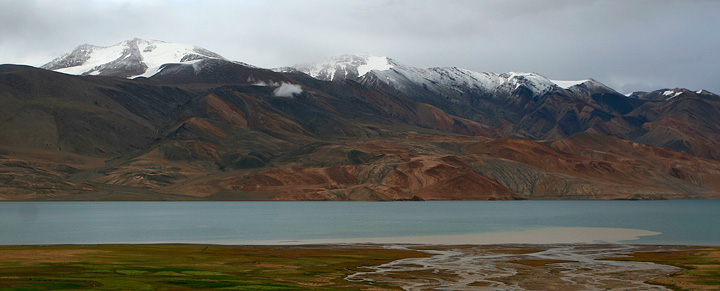
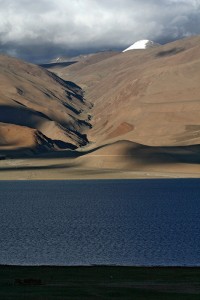
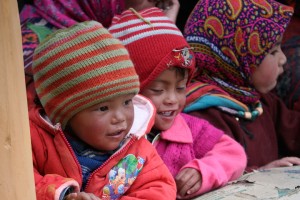
Day 07. Return to Leh via Tso Kar.
We will make the slow and easy drive to Leh on an alternate route, driving through rich grasslands around Tso Kar Lake today. Tso Kar, unlike Pangong and Tso Moriri, is a marshy expanse and has wide open vistas. We will keep a lookout for the Tibetan Wild Asses or Kiang that roam these plains. Once in Tso Kar, you can also spot a good variety of birds. It is a region with surprisingly good variety and desnsity of wildlife. We will continue via Tanglangla and return to Leh in the evening. After a good night’s sleep in Leh tonight, begin your return journey home next morning with truck loads of memories and pictures.
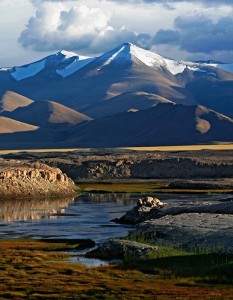
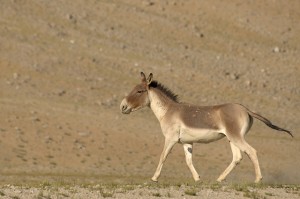
Day 08. Phyang Monastery Festival.
We will drive to Phyang village in the morning to witness Phyang Monastery Festival, an annual celebration at the monastery. The whole village will have gathered to witness the festivities, where monks from the monastery will wear intriguing masks and dance to drum beats. The dances began slow and easy as the monks take deliberate steps circling around the flagpole at the centre of the courtyard. The pace improves slowly with the progress of the dance and concludes with sudden and swift moves that are more suitable to the wild demon-like cover on their faces. A great spectacle and a great photography opportunity. The pictures below are from another monastic festival and indicate what you will see at Phyang.
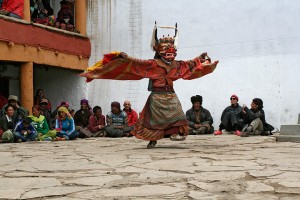
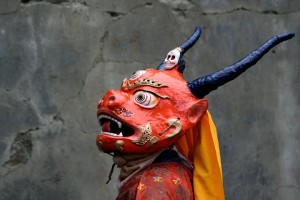
Day 09. Drive to Khardung La and back.
Having gotten used to 10,000+ feet heights, we will now head towards the highest point that we will ever reach during the tour. Be ready for the mountainscapes like you have never seen before. As we slowly climb up the Ladakh Ranges towards Khardung La, you will see jagged snowy peaks of Zanskar Ranges challenging the heights we are climbing. Once on top, you will no longer have to crane your neck to see all the mountains rising tall in the distance: those peaks appear almost at your height. Besides the thrill of having gone up the world’s highest motorable pass, you will get to see vistas that you will never forget for the rest of your life.
We will get back in Leh by afternoon, which gives you plenty of time to rest. You can walk around the Leh’s market area today, see the town and do some shopping if you wish to.
Day 10. Tour ends.
Book this tour
To contact us for any queries or to book the tour, please use the email, phone numbers or the contact form below. Like all our tours, Mountains and Monasteries tour of Ladakh will have a limited number of participants. We recommend booking early, which also helps you get cheaper flight tickets.
email: register@darter.in
Ph: 9880006460 (Arun) / 97400 83260 (Shreeram)
[contact-form 1 “Ladakh Tour”]
When Lady Luck has her eyes set on you, she makes appearances in unlikely places and in unlikely ways.
A Snow Leopard was the last thing I was expecting during my two-week trip to the heart of Zanskar. Being winter, I was hoping to see and photograph no more than a bird or two at the villages we encounter on the way. Our guide Lobsang, who had been beating these tracks for more than ten years had never seen a Snow Leopard in this part of Ladakh. Same was true with our tour leader Manish, who had been visiting Zanskar every winter for the last five years.
It was the ninth day of our trek and we had begun the downstream journey from Zangla Village in Zanskar to Leh. Taking advantage of the roads built to traverse within the remote regions of Zanskar, we were taking a car for the first fifteen kilometers before the road ends and the walk begins.
As we were driving from Pidmo Village to Tsarak Dho, someone in the car spotted a group of Ibex on the other side of the slope, perhaps about half-a-kilometer away. The Ibex, about a dozen of them, were sprinting fast along the slope. For a moment we wondered why they were running so fast. Someone suggested that they were perhaps scared by our car. But we were too far and that was unlikely. Gazing at them from the window of the car, I silently wondered what made them sprint. That’s when I saw an odd one in the group. The last one among the runners appeared to have an unusually long tail, unlike rest of the group with short raised tails. I shouted to Lobsang with excitement and said, “something is chasing them.”
Lobsang, who has grown up in Changthang region seeing many snow leopards eat up their sheep, had a second look and decidedly said, “it is a snow leopard.” There was a sudden burst of excitement in the group. We stopped the car and got down quickly for a good look.
While we were getting out from the jeep, the action on the other side of the slope had come to an end as quickly as we had seen it begin. The group of ibex had managed to give a slip to the leopard and the chaser had given up. A few ibex had got separated from the group, but none were in the danger of being caught. We lost sight of the leopard for a few seconds until Lobsang traced it again, emerging slowly from a depression in the slope. It now walked slowly up the hill with a grace that only a big cat can display, despite having lost chase. Its head though, was drooped and barely seen from the distance that we were at, perhaps with a sense of resignation arising from the failed chase.
As he walked slowly uphill on a scaly patch of snow, I asked Lobsang to keep an eye on it and returned to fetch my camera from the car. The leopard allowed me a few poor-yet-recognizable shots before it went behind a bush and out of our sight.
